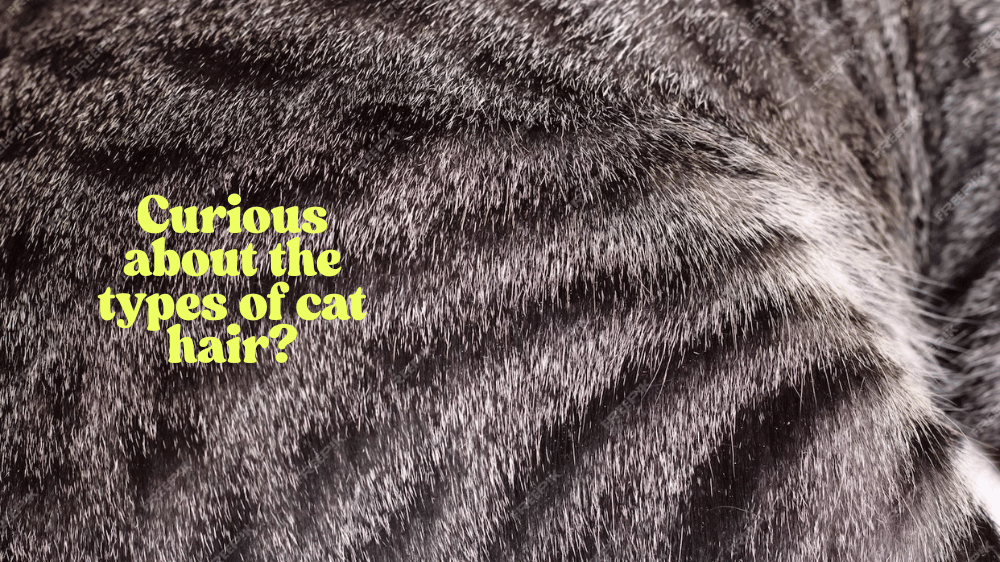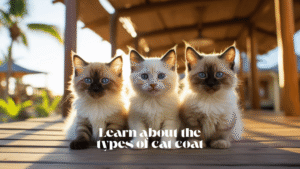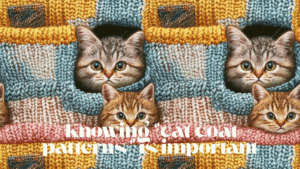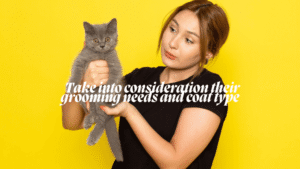If you are a cat lover or planning to adopt a cat, it’s important that you know it’s “types of cat hair”. Every cat has different kind of coat be it short hair or a luscious long one, every kind of cat’s hair needs to be treated differently. In this article, we will be exploring the “different types of cat coats” and their peculiarities. This information can help you select the ideal cat for your home and give your furry friend optimal care.
Types of Cat Hair: An In-Depth Overview
So prior to talking about the “types of cat fur and coats”, it’s important to grasp the makeup of your cat’s fur. Cats have four “types of cat hair” that make up the appearance and function of the coat:
1.Down Hair: The soft, fine hair close to the skin. This undercoat serves to insulate the body, and to help control the temperature of the cat, and is of course first and foremost for warmth and to function daily..
2.Guard Hair: The long, stiff guard hair overlays the down hair to protect it from water, dirt and so forth. The color and pattern of your cat’s coat are generally produced by guard hair.
3.Awn Hair: Medium layer of hair, that is thicker than down hair yet lighter than guard hair. The awn hair serves to mediate the production of volume and texture across the entire coast of the cat.
4.Vibrissae: Also referred to as whiskers, vibrissae are specialized hairs which are sensitive to touch and motion in cats. Those would be helpful for spatial recognition and movement in particular while we were in the dark.
Understanding Cat Coats: Long, Short, and Beyond
So now that we’ve learned all about the different “types of cat hair”, we can also learn about the types of cat coat. Cats can be long-haired, short-haired, curly-haired, or without hair. Here is what each of these “cat coat variations” means:
1.Long Coat: A long-haired cat like the Persian or Maine Coon has a beautiful cat coat that requires more care than a short-haired cat. “Long-haired cats” should be brushed regularly to keep tangles and mats at bay in their fur.
2.Short Coat: Short haired cats have a coat that is less than two inches long. These pussycats are lower maintenance than the long-haired cats, but a good brushing will go a long way in getting loose fur out of the coat and making it glossy.
3.Curly Coat: Breeds like the Devon Rex or Cornish Rex have shiny, curly hair because of a genetic mutation. They tend to be the opposite of most poodle coats and they have their own special grooming method to keep the curls nice and dense without ruining them.
4.Hairless: A few breeds of cats are hairless, with little to no fur, like a Sphinx cat. Hairless cats also need a lot of skin care, they tend to be dry and need to be bathed to remove the oils from their skin.
Cat Coat Patterns: How Genetics Create Gorgeous Designs
But besides the “types of cat hair”, cats also have cat coat patterns which contribute to make the felines one of a kind. Knowing cat coat patterns is important when it comes to identifying your cat’s unique look. Some of the most popular cat coat patterns are:
1.Solid: When a cat’s fur is one single colour, this is a solid coat pattern. These standard cat fur types can be black, white, gray, tan and more.
2.Bicolor: This coat color has two specific colors such as white combined with color. This cat coat variation can appear in many combinations — white and black, or white and orange.
3.Tabby: Tabby cats are recognized for their pattern of streaks, spots or stripes, or a combination of all three. There are different types of tabby including mackerel, blotched, spotty and ticked.
4.Calico: Calico cats have three colors: black, orange, and white. They tend to have large patches of color and no two calicos look alike!
5.Tortoiseshell: The tortoiseshell pattern, which is also called “tortie,” has fur with a combination of black and orange or red. Females are much more likely to exhibit this pattern, as it’s associated with the X chromosome.
6.Colorpoint: Colorpoint cats, such as Siamese, have a lighter colored body with darker fur on the face, ears, feet and tail. This distinct “cat coat pattern” sets these cats apart.
The Scientific Explanation of The Various Cat Coats
The types of cat fur and coats is more than what we see. The genetics which determines a cat’s fur texture and pattern is complicated and mixed up to a small percentage by the sex-linked X genetics that give calico cats their unique personality.
1.Genetics: What type of coat a cat will have is largely determined by its parents’ genes. Some breeds, such as the Devon Rex, have naturally curly coats; others, like the Sphynx, are born hairless as the result of genetic mutations.
2.Environmental Factors: Some long-haired or thick-coated cats were bred in cold regions so to help keep warm. FM There are also many “short haired cats” that tend to live in hotter environments and fare better tu to a thinner coat keeping them cool..
3.Adaptation: The cat fur texture types have evolved in response to the environment. And cats that inhabit cooler climates have evolved to grow longer coats to conserve heat.
Choosing the Right Cat for Your Home Based on Their Coat
When you are selecting a breed from among cats, you do well to take into consideration their grooming requirements and coat type. Various “types of cat hair” require different levels of care, of course, and different breeds factor into your lifestyle more compatible than others:
1.Long-Haired Cats: If you love long hair, be prepared for regular grooming. “Long-haired cats” require brushing every day to prevent mats and tangles.
2.Short-Haired Cats: “Short haired cats” are generally easy to deal with and are great for those who don’t want to do much brushing or grooming. A weekly, perfunctory brush would do.
3.Curly-Haired Cats: If you’re looking for a one-of-a-kind cat hair pattern, cats with curly coats (like the Cornish Rex) make a good pick. These cats might need more specific care to keep up their curls.
4,Hairless Cats: Hairless varieties such as the Sphynx are great members of the family for allergy sufferers. While these cats never shed, they do require regular skin care and bathing to keep their skin healthy.
Cat Fur Care: Grooming Tips for All Fur Types
Whichever of the “types of cat hair” your cat has though, grooming should be done! Try the following grooming tips for each cat coat variation:
1.Long-Haired Cats: Daily brushing is necessary for maintaining a tangle-free, shiny coat. Do it with a good comb for long hair to avoid breaking the hair.
2.Short-Haired Cats: A weekly brush is enough for short-haired cats. It aids in the process of removing dead hair and is a great way to prevent shedding.
3.Curly-Haired Cats: For curly-haired cats, a gentle comb that does not disrupt the curl of its fur would be appropriate to keep in line with the cat’s look. Don’t over-brush as it causes frizz.
4.Hairless Cats: Hairless cats also require frequent bathing, as their bodies would otherwise coat themselves in oils intended to do just that, be stored in their hair. Just make sure that you use a gentle, cat-safe shampoo.
| Type of Cat Hair/Coat | Description | Examples | Grooming Tips |
| Down Hair | Soft, fine hair close to the skin, acts as insulation | Seen in breeds like the Persian | Regular brushing to avoid matting |
| Guard Hair | Coarse, longer hair on top, protects down hair | Maine Coon, Siberian | Regular brushing to prevent tangles |
| Awn Hair | Middle layer, coarser than down hair, softer than guard | Domestic Shorthair, Ragdoll | Weekly brushing to remove loose hair |
| Vibrissae | Whiskers, tactile hair on the face and legs | All cats | No grooming needed |
| Long Coat | Luxurious, long fur (2-5 inches) | Persian, Maine Coon | Daily brushing to prevent tangling |
| Short Coat | Short fur, less than 2 inches long | American Shorthair, Bengal | Weekly brushing to maintain shine |
| Curly Coat | Soft, curly fur due to a genetic mutation | Devon Rex, Cornish Rex | Regular gentle combing to preserve curls |
| Hairless Coat | Very little fur, often soft and suede-like texture | Sphynx, Peterbald | Regular baths to remove oil build-up |
| Solid Coat Pattern | Single color across the entire coat | Solid black, white, gray | Basic grooming, depends on hair type |
| Tabby Coat Pattern | Stripes, spots, or blotches, often with a lighter undercoat | Mackerel, Blotched, Spotted tabby | Brushing as needed to remove shedding |
Conclusion: Embrace Your Cat’s Unique Fur
There’s a “type of cat hair” for every cat under the sun. No matter if your cat has long, silky hair, a short, glossy coat or tight, curly fur, every cat has something special. Knowing the different “types of cat fur” and “cat coat patterns” can work wonders in providing the right care for your pet and better recognizing their special beauty. Regardless of which type of coat your cat may boast, with proper grooming and attention, they’ll be your true friend for many years.
Frequently Asked Questions (FAQs) About Types of Cat Hair
What are the cat fur types?
The cat has different types of hairs, four to be exact: down hair, guard hair, awn hair, and vibrissae. Every type has its unique purpose, ranging from insulation to defense against the elements such as water and dirt.
What kinds of cat coats are there?
Cat coats come in long hair, short hair, curly hair, and even no hair! There are some unique grooming demands according to each coat type. For example, “long-haired cats” need to be brushed often and short-haired cats do not require much attention.
How do I tell the cat coat type?
Cat coat patterns — if any animal needs a book, it’s the feline coif — come in a rainbow of possibilities, including solid, bicolor, tabby, calico, tortoiseshell and color point. These patterns are dictated by genetics and provide every kitty with a distinctive appearance. For example, a tabby cat would generally be striped or spotted, while a calico would have three colors of fur.
What is the difference between down and guard hair?
Under hair is soft and denser and found underneath the guard hairs to help with protection and thermoregulation. Topcoat hair is longer and stiffer hairs that lie on top of the undercoat to help protect it from the elements and keep the over appearance of the cat’s fur.
Are all cats’ hairs the same?
No, it’s not that all the cats have the same kind of hair. Some cats would have long hairs and others might have short or no hairs at all. These variances are based on the cat’s specific breed and genetics.
How often should I groom my cat by its type of fur?
The amount of grooming your cat needs will depend on the length and type of coat:
Long-haired felines should be brushed every day to prevent matting and tangling.
For senior cats with shorter hair, once a week grooming is usually enough.
Curly cats need to be brushed but GENTLY to keep their fur in its original state.
Hairless cats require frequent skin care and bathing to remove oils and keep the skin clean.
What is a curly cat coat?
A curly coat is a manifestation of a genetic mutation, most commonly affecting breeds such as the Devon Rex and Cornish Rex. These cats have soft, luscious fur instead of the standard straight or long fur. Despite their weird texture, however – they’re as lovable as any dog breed.
Can a cat’s fur change texture and feel as it grows?
Yes, caterpillar texture types can change as it grows. For instance, a kitten may have a very fine, fluffy coat that fills in to a thicker, coarser coat as the cat grows older. This is a very common appearance in dogs with long or curly hair.
Are certain cats more susceptible to certain health risks based on cat fur?
Certain cat fur types, especially the long-hairs, are susceptible to matting and the skin can become irritated or infected if the coat is not kept neat and groomed. Hairless cats are also prone to skin problems such as dryness or sunburn because they don’t have the natural fur protection.
Which fur type in a cat is best for someone allergic?
Hairless cats, including the Sphinx, are typically regarded as being preferable for people with allergies, because they produce fewer reactions due to shedding less dander. But it should be mentioned that no cat is 100% hypoallergenic, so people with allergies should spend time with a cat before committing to adopt.
Prepared in giving Your Cat’s Unique Coat the care that it needs?
With all of the information here on “types of cat hair” and how to tend to your cat’s coat now it’s time to spring into action! Whether you’re primping your “long-haired cat” or tending to a curly-coated kitten, the key to keeping your cat happy and healthy is proper maintenance.
Anything else you want to know about your cat’s coat or grooming routine? Tell us in the comments below. We would want to know more about your own fur buddy and assist you in making them purr with happiness.
And remember to tell your cat-loving friends to keep their cat’s coats in top condition with this helpful guide!





